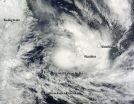(Press-News.org) DURHAM, N.C. -- The discovery of the "exercise hormone" irisin three years ago and more than 170 related papers about it since have been called into question by recent research showing they were based on flawed testing kits.
Previous studies suggested that the hormone irisin -- named for the Greek messenger goddess Iris -- travels from muscle to fat tissue after exercise to tell fat cells to start burning energy instead of storing it. The finding ignited hope and press coverage that irisin could hold the key to fighting diabetes and obesity, perhaps one day taking the form of a pill that could melt away the pounds without the hassle of a workout.
But new research from an international team of scientists has found that the antibodies used to measure levels of irisin in blood were poorly vetted and nonspecific. These researchers argue that the irisin levels reported by commercial kits were actually due to unknown blood proteins, misconstruing the role of the hormone in human metabolism.
The study, appearing March 9 in the journal Scientific Reports, directly tested the antibodies used in previous analyses and showed that they cross-reacted with proteins other than irisin, yielding a false positive result. Furthermore, none of the proteins detected by these test kits in any human or animal blood samples were the correct size to be irisin.
"From the start, the study of irisin has been complicated by unvalidated reagents and contradictory data that have raised flags about the existence of irisin and its role in humans and other species," said Harold P. Erickson, Ph.D., an author of the study and professor of cell biology and biochemistry at Duke University School of Medicine. "We provide compelling evidence that the signals reported by previous studies were due to non-specific blood proteins, not irisin. Hopefully, our findings will finally convince other researchers to stop chasing a myth."
Irisin's reputation as a fat-burning molecule can be traced back to a 2012 paper in the journal Nature. The researchers reported that in response to exercise, the tail end of a muscle protein called FNDC5 was lopped off and sent through the bloodstream to fat tissue, where it turned white fat into brown fat. Brown fat burns calories, and is what hibernating animals -- and even human babies -- use to keep warm.
A slew of studies quickly followed looking into how the levels of this protein fragment -- which the original authors named irisin -- were affected by exercise, diabetes, obesity, even cancer. To measure irisin levels in blood, most researchers took a common shortcut and relied on commercial antibody kits called ELISA, which were marketed by several biotech companies.
The biotech companies and the scientists who purchased the kits largely ignored the possibility that their antibodies might be cross-reacting with other proteins and thus overestimating levels of irisin, Erickson said.
Erickson had raised this concern in a commentary article in the journal Adipocyte in 2013. The following year, he was excited to find two papers on the topic from the laboratory of German researcher Steffen Maak. The Maak studies had not relied on the ELISA, but used a more specific and time-consuming method known as a Western blot.
In an ELISA, all the proteins in the sample to be analyzed reside in a single dish, like alphabet soup. In this case, an antibody designed to stick to all the "p's" in the soup will give a signal for each "p" it binds, but scientists can't know for sure if it also bound some "q's" or "d's" in the process. In contrast, in a Western blot all of the proteins in a sample are run out singly, from "a" to "z." If an antibody binds other letters, the scientists know because they see a signal at the wrong spot in the alphabet. Likewise, if the antibody doesn't recognize the right letter, there won't be a signal where there should be.
Erickson emailed Maak and they initiated a collaboration, which was joined by the laboratories of Christian Devon in Norway and Vincenz Gerber in Switzerland. They ordered the antibodies that had been used in more than 80 studies to measure irisin levels, and they analyzed them using Western blots. The researchers turned up two critical issues. First, the antibodies failed to detect a protein of the correct size for irisin in any blood sample -- even in horses that were training for long distance running. Second, each antibody reacted strongly with several blood proteins that were the wrong size for irisin.
As a control, Erickson's laboratory synthesized two different versions of irisin, one dotted with sugars like the naturally derived protein, the other one sugar-free. The researchers then added various amounts of these proteins to their samples and repeated the Western blot. They showed the antibodies could detect even tiny amounts of both forms of irisin, and that they were the expected sizes of 20 and 13 kilodaltons.
The researchers believe that their findings dispute all previous data obtained with commercial ELISA kits for irisin and make it unlikely that the hormone plays a physiological role in humans.
"Our conclusions make sense, especially in light of the work of other researchers who have shown that the human version of the FDNC5 gene has a deleterious mutation at the beginning," Erickson said. "As a result, humans can produce less than one percent of the irisin present in other species. Humans are essentially a gene knock-out -- they can't produce FNDC5, and therefore they can't produce irisin."
INFORMATION:
The research was supported in part by grants from the National Institutes of Health (R01-CA47056) and the Leibniz Association (SAW-2013-FBN-3).
CITATION: "Irisin - a myth rather than an exercise-inducible myokine," Elke Albrecht, Frode Norheim, Bernd Thiede, Torgeir Holen, Tomoo Ohashi, Lisa Schering, Sindre Lee, Julia Brenmoehl, Selina Thomas, Christina A. Drevon, Harold P. Erickson, and Steffen Maak. Scientific Reports, March 9, 2015. DOI:10.1038/srep08889
http://www.nature.com/srep/2015/150309/srep08889/full/srep08889.html
In a study that helps to deconstruct how olfaction is encoded in the brain, neuroscientists at University of California, San Diego School of Medicine have identified a type of neuron that appears to help tune, amplify and dampen neuronal responses to chemosensory inputs from the nasal cavity.
The study, published March 9 in Nature Neuroscience, has applications to understanding the root cause of epileptic seizures, which are frequently centered in the olfactory cortex, the part of the brain that processes the sense of smell.
"Our sense of smell is complex and involves ...
A new class of drugs identified and validated by Mayo Clinic researchers along with collaborators at Scripps Research Institute and others, clearly reduces health problems in mice by limiting the effect of senescent cells -- cells that contribute to frailty and diseases associated with age. The researchers say this is a first step toward developing similar treatments for aging patients. Their findings appear today in the journal Aging Cell.
"If translatable to humans -- which makes sense as we were using human cells in many of the tests - this type of therapy could keep ...
Irvine, Calif., March 9, 2015 -- Long the stuff of science fiction, the disembodied "brain in a jar" is providing science fact for UC Irvine researchers, who by studying the whole brains of fruit flies are discovering the inner mechanisms of jet lag.
To do this, Todd C. Holmes, professor of physiology & biophysics in the UCI School of Medicine, and colleagues used imaging technology to make movies of fruit fly brains kept alive for six days in a petri dish. The scientists captured the activity of individual circadian clocks at single-cell resolution with an extremely ...
More than two years after Washington legalized marijuana, parents and teens may be hazy on the specifics of the law, if the findings of a new study are any indication.
University of Washington research, published recently in Substance Use & Misuse, found that only 57 percent of Washington parents surveyed knew the legal age for recreational marijuana use and just 63 percent knew that homegrown marijuana is illegal under the law.
And while 71 percent of 10th-graders correctly identified the legal age, fewer than half (49 percent) knew how much marijuana can legally ...
MISSOULA - Researchers at the University of Montana, Princeton University, Stanford University and Rutgers University, among others, are collecting new measurements of tropical forests to gain a better understanding of how they respond to seasonal climate variations.
The new information helps predict how the global tropics may react to future climate change. These findings are detailed in a paper titled "Photosynthetic seasonality of global tropical forests constrained by hydroclimate," which was published in Nature Geoscience this month.
"A better understanding ...
The relationship between human disease and environmental management has been the subject of extensive research, especially given the recent outbreaks of Ebola, SARS and other zoonotic infectious diseases that transmit from animals to humans.
The fieldwork of UC Santa Barbara community ecologist Hillary Young is a good example of researchers' continuing effort to understand exactly how environmental management affects disease emergence. In East Africa, Young examines the direct impacts of human disturbance on landscape and wildlife, as well as a variety of factors affecting ...
Tropical Cyclone Haliba formed east of the island nation of Madagascar in the Southern Indian Ocean and is now affecting the La Reunion and Mauritius islands. NASA's Terra satellite passed over Haliba on March 9 and captured an image of the storm that showed the eastern quadrant was affecting the two smaller islands.
The Moderate Resolution Imaging Spectroradiometer (MODIS) instrument aboard NASA's Terra satellite captured a visible image of Tropical Cyclone Haliba on March 9 at 06:35 UTC (2:35 a.m. EDT). The image showed both La Reunion and Mauritius islands were covered ...
Although many people value receiving information about incidental findings identified from genomic sequencing, not everyone wants to know about genetic conditions regardless of potential health implications, found a study of Canadian preferences in CMAJ (Canadian Medical Association Journal).
An incidental finding refers to discovery of a genetic condition that may cause a disease, but the finding is unrelated to why genomic testing was initially ordered by the physician. For example, a test to determine if there is a genetic cause of a patient's colon cancer may find ...
In a screen of more than 100,000 potential drugs, only one, harmine, drove human insulin-producing beta cells to multiply, according to a study led by researchers at the Icahn School of Medicine at Mount Sinai, funded by JDRF and the National Institutes of Health, and published online today in Nature Medicine.
Diabetes results from too few insulin-producing "beta cells" in the pancreas secreting too little insulin, the hormone required to keep blood sugar levels in the normal range. The disease affects 380 million people worldwide, and leads to major medical complications: ...
COLLEGE PARK, Md. -- An analysis of changes to the climate that occur over several decades suggests that these changes are happening faster than historical levels and are starting to speed up. The Earth is now entering a period of changing climate that will likely be faster than what's occurred naturally over the last thousand years, according to a new paper in Nature Climate Change, committing people to live through and adapt to a warming world.
In this study, interdisciplinary scientist Steve Smith and colleagues at the Department of Energy's Pacific Northwest National ...

